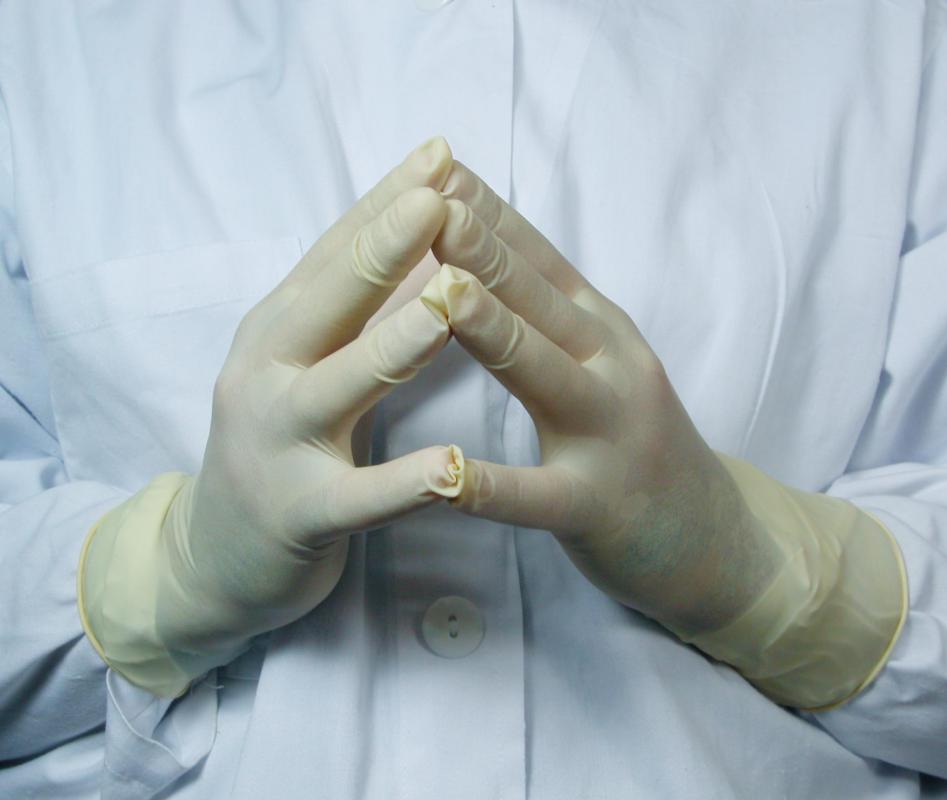At WiseGEEK, we're committed to delivering accurate, trustworthy information. Our expert-authored content is rigorously fact-checked and sourced from credible authorities. Discover how we uphold the highest standards in providing you with reliable knowledge.
What is a Baker's Cyst?
A baker’s cyst, is not named after people who bake, but instead derives its name from Dr. William Baker, a 19th century British physician who described the condition. You may also hear the alternate name popliteal cyst as opposed to baker’s cyst. The condition may be caused by damage to the knee joint, extensive arthritis, or in some cases has no apparent cause. In most cases, the cyst itself is expressed as a protrusion on the back of the knee that is often painful and makes bending or straightening the knee joint difficult.
People with a baker’s cyst may note swelling at the back of the knee, which is usually most noticeable when the person is standing up. The back of the knee can also feel tight, and in some cases very painful. Some people get this condition in a milder form, with little to no pain, and with few identifying causes.

The baker’s cyst forms when the fluid used to lubricate the joints, called synovial fluid is produced in excess. This can cause tissue pockets called bursa, through which the fluid passes, to become overloaded with fluid. In particular the popliteal bursa located in the back of the knee may become significantly overloaded and expand, which creates the cyst.

If you have swelling and pain in the popliteal bursa, you should see a physician. There are some complications that can occur without medical treatment, and other conditions exist which may resemble a baker’s cyst. For example, the condition could really be a blocked artery or a tumor. General tests to identify popliteal cysts include using either ultrasound and/or magnetic resonance imaging (MRI) to evaluate and correctly diagnose the condition. These can help rule out other potential causes for the bulge behind a knee.

Certain circumstances require immediate treatment. If the swelling is very pronounced, the affected leg is red, and sharp pain is present, this may suggest the cyst has burst and fluid is leaking into the calf. Doctors may need to evaluate and treat this through a variety of methods, often those similar to treating a blood clot.
In other cases, the baker’s cyst recedes on its own, and people may undergo some physical therapy with range of motion exercises to help reduce pain. Icing the cyst or creating a compression wrap around the cyst is common, and patients with mild to moderate pain may take medication like ibuprofen. Using crutches and keeping weight off the knee is often recommended and limiting physical activity when the cyst is very painful makes good sense.

Sometimes the most important thing to treat is not the cyst, but the underlying cause. If the cyst results from cartilage tears that leaked extra synovial fluid into the bursa, the tear may require surgery. If arthritis is the problem, doctors work to address the arthritic condition, though this doesn’t always improve the cyst. Sometimes the baker’s cyst enlarges and requires more aggressive treatment, such as needle aspiration (where fluid is drained from the cyst) or surgical removal of the cyst.
AS FEATURED ON:
AS FEATURED ON:


















Discussion Comments
I developed a Baker's Cyst at the back of my knee and lived with some moderate pain and stiffness for about a year. Since the cyst didn't go away on its own, I decided to have surgery to remove it.
The surgery itself took about an hour and was removed by a small incision where the cyst was. It took 3-4 weeks before I felt 100% back to normal, but I am glad I went ahead and had it removed instead of fighting the pain all the time.
Post your comments